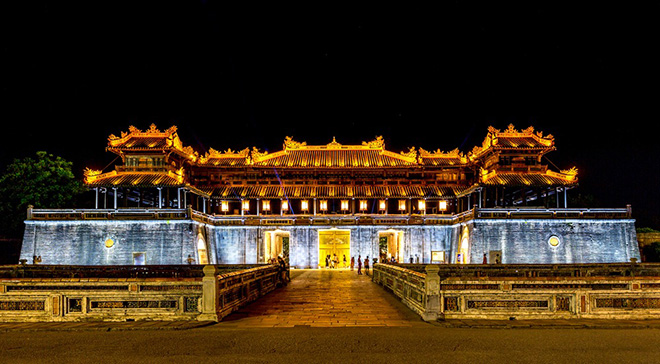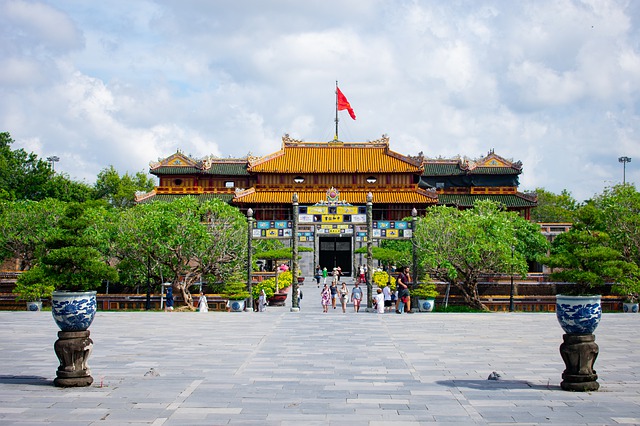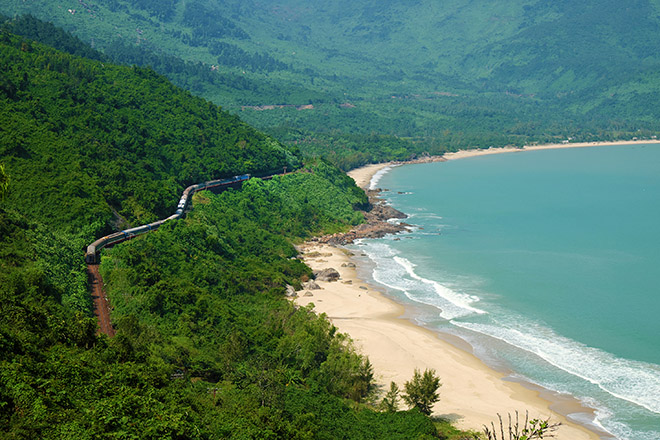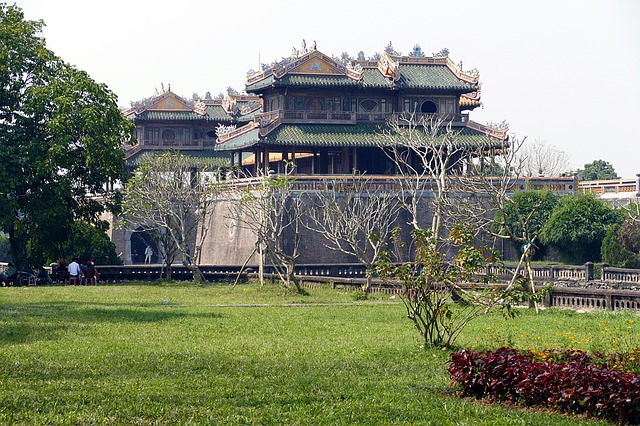If big cities like Hanoi and Saigon stand out thanks to the increasingly modern architecture, great economic development, there are cities that still retain their ancient values – that is Hue. Even though it has grown significantly, it still has the appearance of a place that used to be an ancient capital and the whole city is dyed with strange and ancient beauty.
A complete guide into the ancient Hue citadel
- The history of Hue citadel
- The massive structure of Hue Citadel
- Things to bear in mind when visiting Hue Citadel
The history of Hue citadel
Hue Citadel (or Thuan Hoa Citadel) is a citadel in the ancient capital of Hue – the capital of the Nguyen Dynasty during 143 years from 1802 until abdication in 1945. Currently, Hue Citadel is one of the Monuments belonging to Hue Monuments Complex, which are recognized by UNESCO as a World Cultural Heritage.
Hue citadel was built from 1805 to 1832 under the reign of King Minh Mang. More than 30,000 soldiers and people from the central provinces of Vietnam were mobilized to work in Hue. King Gia Long was so dedicated to the work, applying strict standards to the legendary citadel.
But the process did not seem to be smooth at all. Right during the most intense stage of the construction, King Gia Long fell ill and passed away a short time later. It was a huge loss to the royals, and the progress of building Hue citadel froze for a while. His son – later King Minh Mang ascended the throne to continue the mission left by the king father. King Ming Mang did his best to refine every detail of the “century construction”, fulfilling his father’s expectations and even making it more outstanding. At last in 1832, the citadel was basically completed, marking itself a unique symbol of all time, telling the stories for a golden period.

It is fair to say, in the history of Vietnam in modern times, the construction of Hue Citadel is probably the most massive, superficial and largest construction with thousands of people taking part in construction, millions of cubic meters of stone and sand, together with a huge workload of ditching, river filling, emigration, and relocation of graves. Even King Gia Long once acknowledged that: “The construction of a citadel is of great importance to the whole country, and it is worth huge cost”.
The massive structure of Hue Citadel
Hue Citadel is located on the north bank of Huong River, facing south, with an area of 520 ha. The Imperial City and all buildings of the Imperial Citadel, like the Forbidden City of China all face south – the direction that is considered to be bringing safety and prosperity to the whole land. Hue Citadel has 10 main doors, divided based on the direction: North Gate (Back Gate); North-West Gate (An Hoa Gate); West Gate; South-West Gate (Huu Gate); Main South Gate (Nha Do Gate); Quang Duc Gate; The Nhon Gate; East-South Gate (Thuong Tu Gate); Main East Gate; East-North Gate (Ke Trai Gate).

Inside the Imperial City, there were residences, mandarins and the most important part was the Imperial Citadel – the residence and workplace of the king and the royal family. In addition, Hue Imperial Citadel is also a place of worship of ancestors and Nguyen kings. Inside the Imperial Palace, there is Thai Hoa Palace, which is a royal court; areas of shrines; and Forbidden City – the regular living place of the King and royalty. People often call the Imperial Citadel and the Forbidden City as the Great Citadel. Another huge citadel inside the Imperial City is the Forbidden Citadel, which was, unfortunately, heavily destroyed by the French during the Vietnam War.
In addition to these two major remains, there are Ky dai, meaning the area where the flagpole is placed; Quoc Tu Giam (The ancient royal school); Tinh Tam lake (Peaceful lake); the Royal Museum and many other fortresses.
Things to bear in mind when visiting Hue Citadel
When should you arrive in Hue?
In April or June of even years, because there will be Hue Festival. The festival takes place with many traditional Hue cultural activities. You can also go to Hue in January and February. During that time, the weather in Hue is specifically comfortable, so visiting Hue Citadel will be more interesting and comfortable an experience.
Transportation:
If you depart from Hanoi or Ho Chi Minh City, the 3 options for you are by air, by train and by car. The best option is flight. Travelling by air is much faster and it is also time-saving, yet the fare can be relatively high, up to 2.6 million VND/ return ticket.
If you depart from Danang, car is the best option. This way of transportation will take you through the Hai Van pass with stunning view of the sea from above. And also you can witness the Lang Co beach – a very famous beach in Vietnam.

Lang Co beach
Highlights of Hue Citadel?
Ngo Mon Gate: is the main gate of the Imperial City, located south of Hue citadel. This is a quite complex architectural complex, magnificent, viewed from afar like a magnificent castle, but also very close, in harmony with the natural landscape and the soul, the emotions of the Hue people.
Thai Hoa Palace: It is the center of the imperial city of Hue, also the center of the country, a symbol of power of the Nguyen Dynasty. The palace, along with the court, was used for important imperial court ceremonies.

Duyet Thi Duong: is a theater for the royal to watch performances of traditional Tuong plays. This is the oldest theater in Vietnam theater industry. Now Duyet Thi Duong is restored and put into operation in Hue royal music performance to serve tourists very attractive.
Bao Vinh Town: Bao Vinh ancient town, from the middle of the seventeenth century to the nineteenth century, was considered the busiest commercial area not only of the imperial city of Hue but also the court of Dang Trong. Bao Vinh ancient town formerly had 39 houses aged 150 to 200 years old but so far most of them have deteriorated, only 15 old houses are scattered. However, the wild fairy beauty of something old, nestled on a peaceful river always gives visitors the feeling of lightheadedness.
Useful tips for your Hue citadel trip:
Clothing: Hue has many types of terrain, from plains to mountains, the sea, so you need to prepare appropriate costumes for each type of terrain if you want to explore all the places. Because the weather here is humid tropical, you are advised to wear light clothes, better made from sweat-absorbing cloth.
Personal stuff: In the case of severe dry season weather, sunscreen is indispensable, while the rainy season cannot avoid sudden rains so always bring a raincoat, an umbrella … Small items like sunglasses, hats, small paper bags … will be essential, both for beautiful and useful purposes.
Lastly, Cash: do not forget to bring along some cash. Many places in Hue do not accept cards, so make sure you have another form of currency with you when in need.





Comments